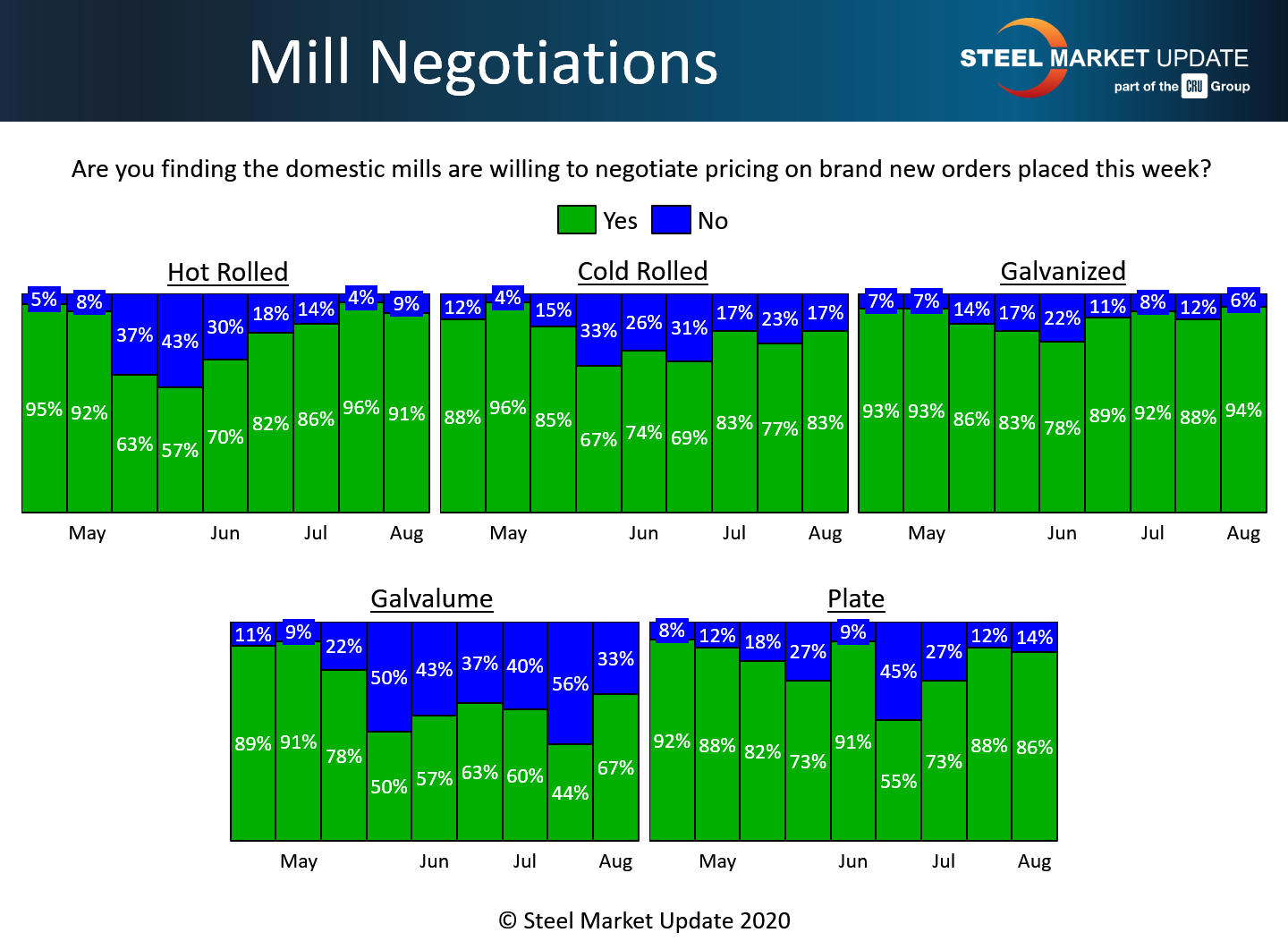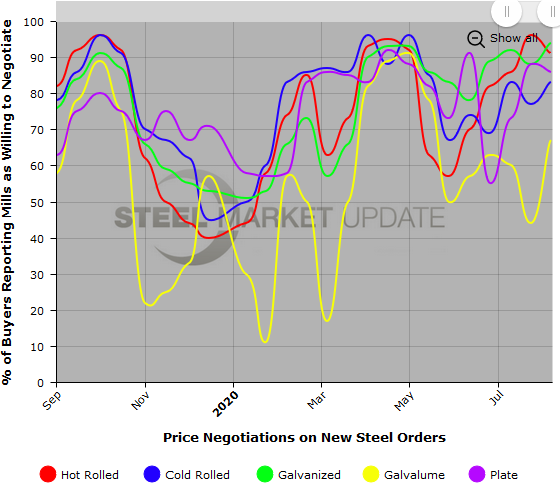SMU Data and Models

Steel Mill Negotiations: Buyers in Strong Position
Written by Tim Triplett
August 6, 2020
Steel buyers maintain their strong position in price negotiations with steel makers as demand slowly recovers from the coronavirus. The vast majority of those responding to Steel Market Update’s questionnaire this week report that the mills are willing to compromise on price to win orders.
Nearly all the hot rolled buyers (91 percent) said the mills are open to price talks, while just 9 percent said the mills are standing firm on HR prices. That’s roughly the same percentage as two weeks ago.
In the cold rolled segment, 83 percent reported the mills willing to talk price, up from 77 percent two weeks ago.
In galvanized, 94 percent reported the mills open to discounting prices, a small increase from 88 percent in SMU’s last canvass of the market. About 67 percent found the mills willing to compromise on Galvalume prices this week.
Negotiations are common in the plate market, where 86 percent said the mills are now willing to bargain to capture the sale, while just 14 percent reported the mills saying no to discounts. That’s basically unchanged from two weeks ago.
Benchmark hot rolled steel prices have declined by more than $100 per ton since before the coronavirus and now average $450 per ton, based on SMU’s latest poll. The price increase announced by the integrated mills on July 21 does not appear to have stuck without the support of the EAF mills. About 70 percent of the steel buyers responding to SMU’s questionnaire this week said they believe flat rolled prices are near a bottom.
Note: SMU surveys active steel buyers twice each month to gauge the willingness of their steel suppliers to negotiate pricing. The results reflect current steel demand and changing spot pricing trends. SMU provides our members with a number of ways to interact with current and historical data. To see an interactive history of our Steel Mill Negotiations data (second example below), visit our website here.



Tim Triplett
Read more from Tim TriplettLatest in SMU Data and Models

SMU Survey: Buyers’ Sentiment rebounds from multi-year low
Both of SMU’s Steel Buyers’ Sentiment Indices edged higher this week. Current Sentiment rebounded from a near five-year low, while Future Sentiment rose to a two-month high

SMU flat-rolled market survey results now available
SMU’s latest steel buyers market survey results are now available on our website to all premium members.

SMU Survey: Sheet lead times pull back after early-June blip, plate holds
Following the uptick seen two weeks ago, lead times eased this week for all four sheet products tracked by SMU, while plate lead times held steady, according to this week’s market survey.

SMU Survey: Pricing power abruptly shifts to steel buyers
The majority of steel buyers responding to our latest market survey say domestic mills are more willing to talk price on sheet and plate products than they were earlier this month. Sheet negotiation rates rebounded across the board compared to early June, while our plate negotiation rate hit a full 100%.

Service centers: Mill orders down marginally in May
SMU’s Mill Order Index (MOI) declined for a third straight month in May, but only marginally.
